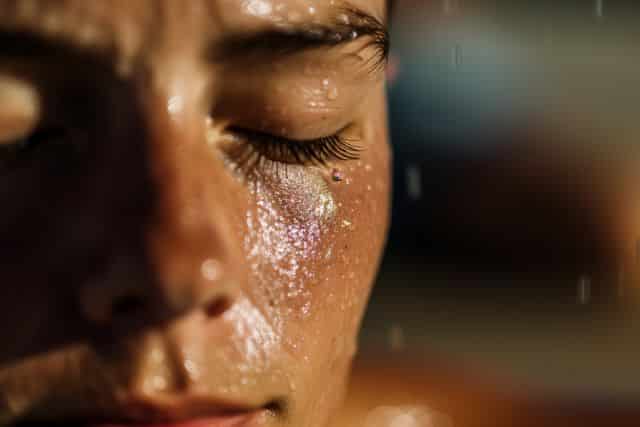What is Hot Yoga?
Hot yoga involves practicing various yoga styles in a heated environment, enhancing the intensity of the workout. Originally, the heat and humidity in hot yoga aimed to mirror the hot climate of India, where yoga is believed to have originated. Hot yoga sessions vary in temperature, typically ranging from 80 to 100 degrees Fahrenheit, allowing muscles to relax more deeply and the body to detoxify through sweat. Unlike traditional yoga, which is practiced at room temperature, hot yoga provides a more vigorous experience, increasing the body’s workload.

Difference Between Hot Yoga and Bikram Yoga
While often confused, hot yoga and Bikram yoga are distinct. Bikram yoga, established by Bikram Choudhury, involves a specific sequence of 26 postures performed in a room heated to 105 degrees Fahrenheit with 40% humidity. This style is more rigid, with a set environment and sequence. In contrast, hot yoga can include a variety of postures and does not adhere to a fixed sequence, offering more flexibility in class structure.
Traditional vs. Modern Forms of Yoga
Traditional yoga practices focus on spiritual and physical well-being without added heat, whereas modern forms like hot yoga emphasize physical intensity and detoxification through sweating. The modern adaptation of hot yoga caters to those seeking a challenging physical activity combined with the mental benefits of yoga.
How to Get Started with Hot Yoga
Choosing the Right Studio
It goes without saying that selecting the right hot yoga studio is important in order to have a positive experience. It is always a good ideal to visit the studio you are considering in order to assess the atmosphere, cleanliness, and available amenities like showers and yoga mats. Many yoga studios offer trial classes, which are a great opportunity to experience the teaching style and overall environment before making a long-term commitment.
What to Wear
For hot yoga, wearing moisture-wicking, lightweight clothing that allows freedom of movement is essential. Women may opt for tank tops or sports bras and shorts or lightweight capris, while men might choose moisture-wicking shorts and tanks. Avoid heavy and loose-fitting clothes as they can become uncomfortable due to sweat. Bringing a change of clothes and a towel is also recommended to manage sweat during and after the class.
First Class Expectations
Arrive early to your first class to complete any necessary paperwork, familiarize yourself with the studio, and secure a comfortable spot. It’s advisable to hydrate well before the class but avoid heavy meals and drinking large amounts of water right before starting. Expect the class to be challenging; take breaks if needed and don’t push your body too hard. Familiarize yourself with basic yoga poses through online resources to feel more confident during the class. Remember, each person’s experience with hot yoga can vary, so go in with an open mind and focus on your personal comfort and safety.
Benefits and Safety Tips
Physical Benefits
Hot yoga offers numerous physical benefits, including improved flexibility and increased calorie burn. For instance, a session of Bikram yoga can burn up to 460 calories for men and 330 for women. The heat helps loosen muscles more quickly, enhancing the effectiveness of each pose and potentially increasing bone density, particularly beneficial for premenopausal women. Additionally, the practice can elevate cardiovascular fitness and boost metabolism, making it a powerful tool for overall physical health 1.
Mental and Emotional Benefits
The mental and emotional benefits of hot yoga are significant. Participants often experience reduced symptoms of depression and a notable increase in well-being, including enhanced life satisfaction and peace of mind. The heat-induced stress may also lower inflammation levels, which is linked to improved mental health outcomes. Regular practitioners report increased mindfulness and reduce perceived stress, contributing to better mental and emotional balance.
Important Safety Precautions
While hot yoga is beneficial, it’s crucial to practice it safely, especially in extreme heat. It’s important to stay hydrated before, during, and after sessions to prevent dehydration. Beginners should allow their bodies to acclimate to the heat gradually to avoid heat-related illnesses. Individuals with certain health conditions or those taking medications that affect body temperature regulation should consult with a healthcare provider before starting hot yoga 2.
Is hot yoga suitable for beginners? Hot yoga can be quite challenging for beginners as it offers a unique and intense experience. It may take a few sessions to adjust to the demands of the practice.
How should I prepare for a hot Pilates class? To prepare for a hot Pilates class, ensure you are well-hydrated before and after the session, but try to minimize drinking during the class itself. Wear light fitted clothing such as gym clothes or a swimsuit. Avoid long pants and loose t-shirts as they may become uncomfortable due to the heat and moisture.
Get Answers to Your Hot Yoga Questions
Hot yoga offers not only the physical benefits of enhanced flexibility and calorie burn, but also the mental uplifts, including increased well-being and reduced stress. If you are considering incorporating hot yoga into your routine, we invite you to talk with one of our excellent teachers who can answer all your questions and help you more fully understand its benefits and be fully prepared to embark on a transformative journey that bridges the gap between physical vigor and mental serenity.
References & Additional Reading
[1] – https://www.healthline.com/health/hot-yoga-benefits[2] – https://www.yogajournal.com/yoga-101/types-of-yoga/hot-yoga/facing-the-heat/

